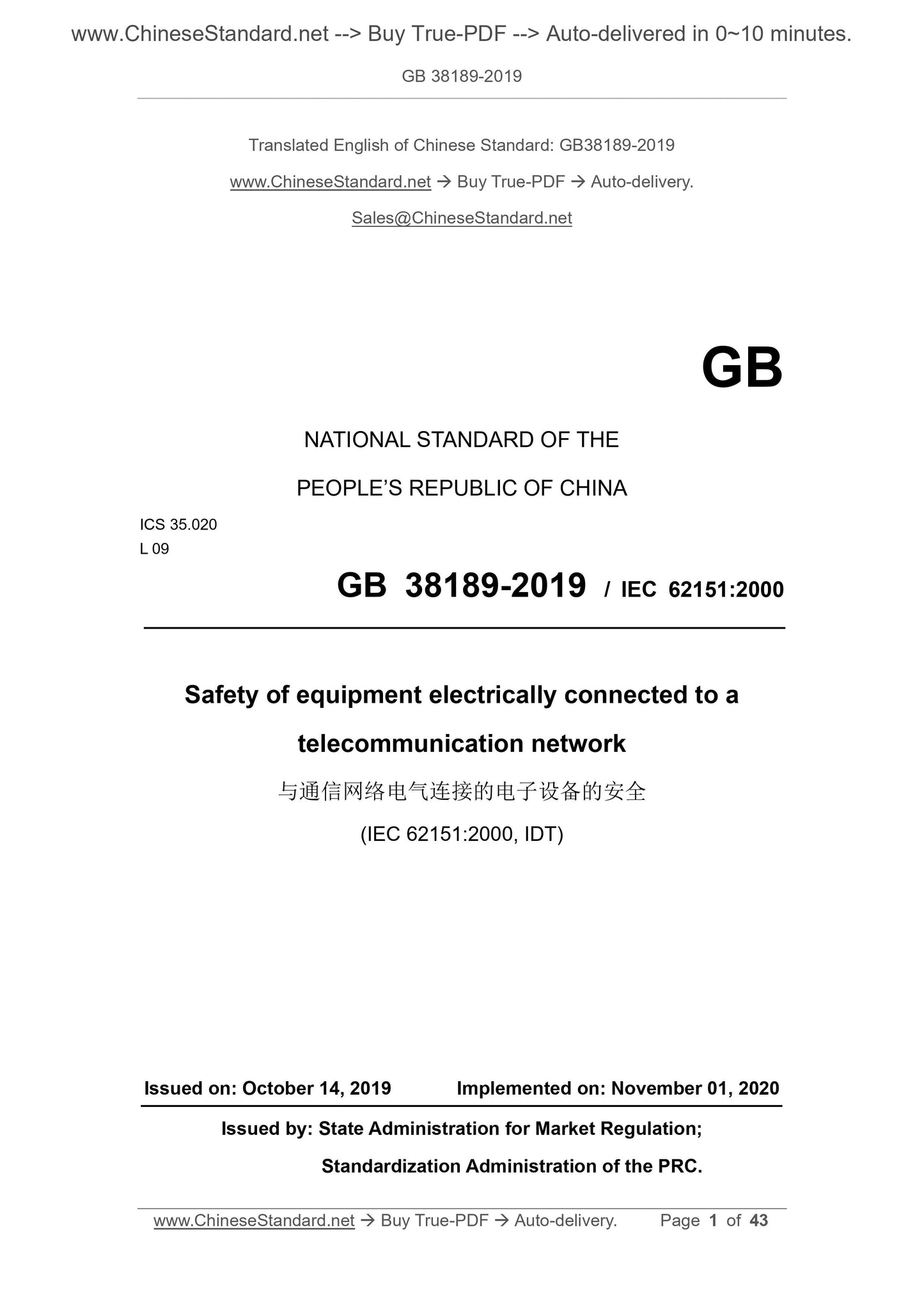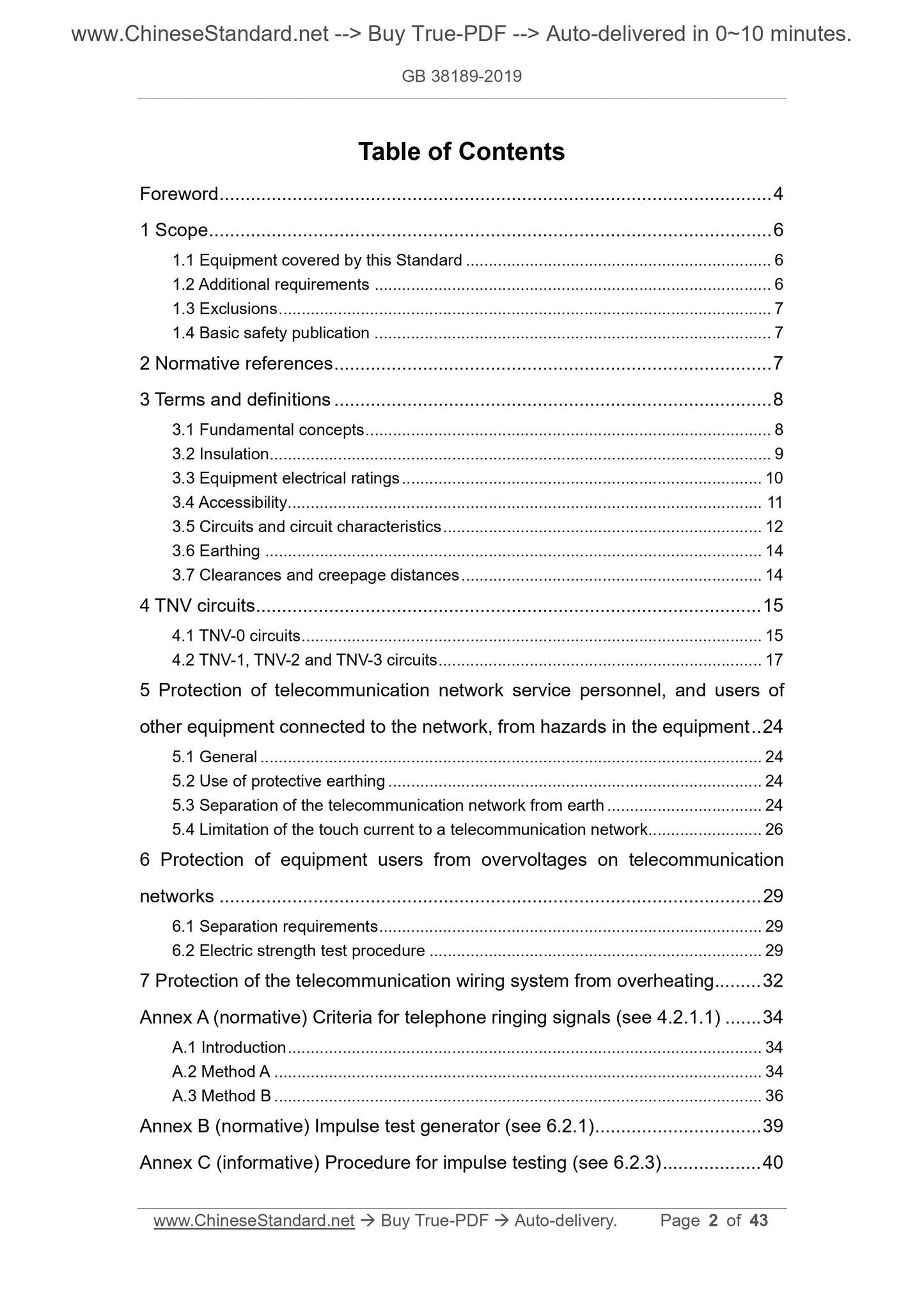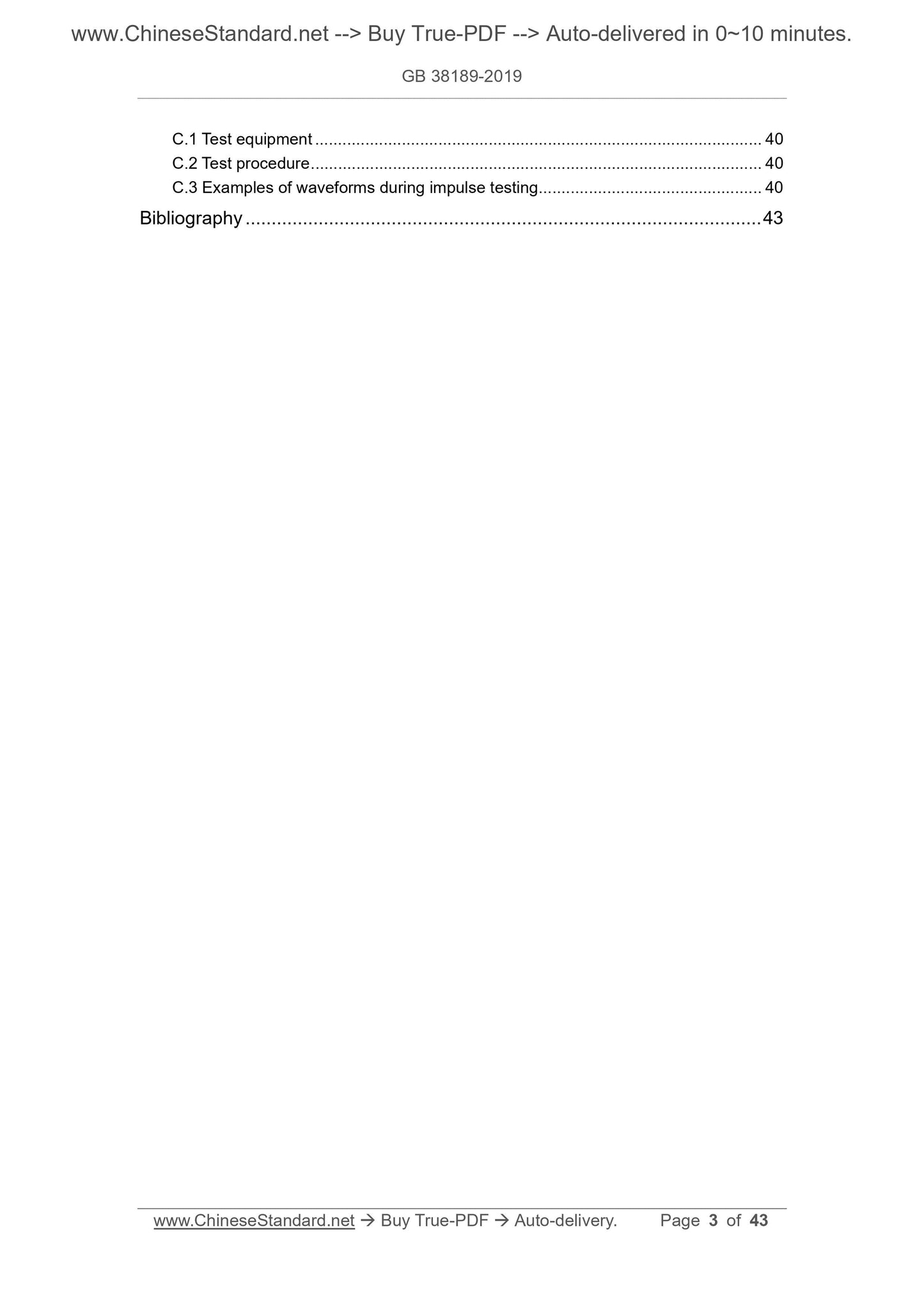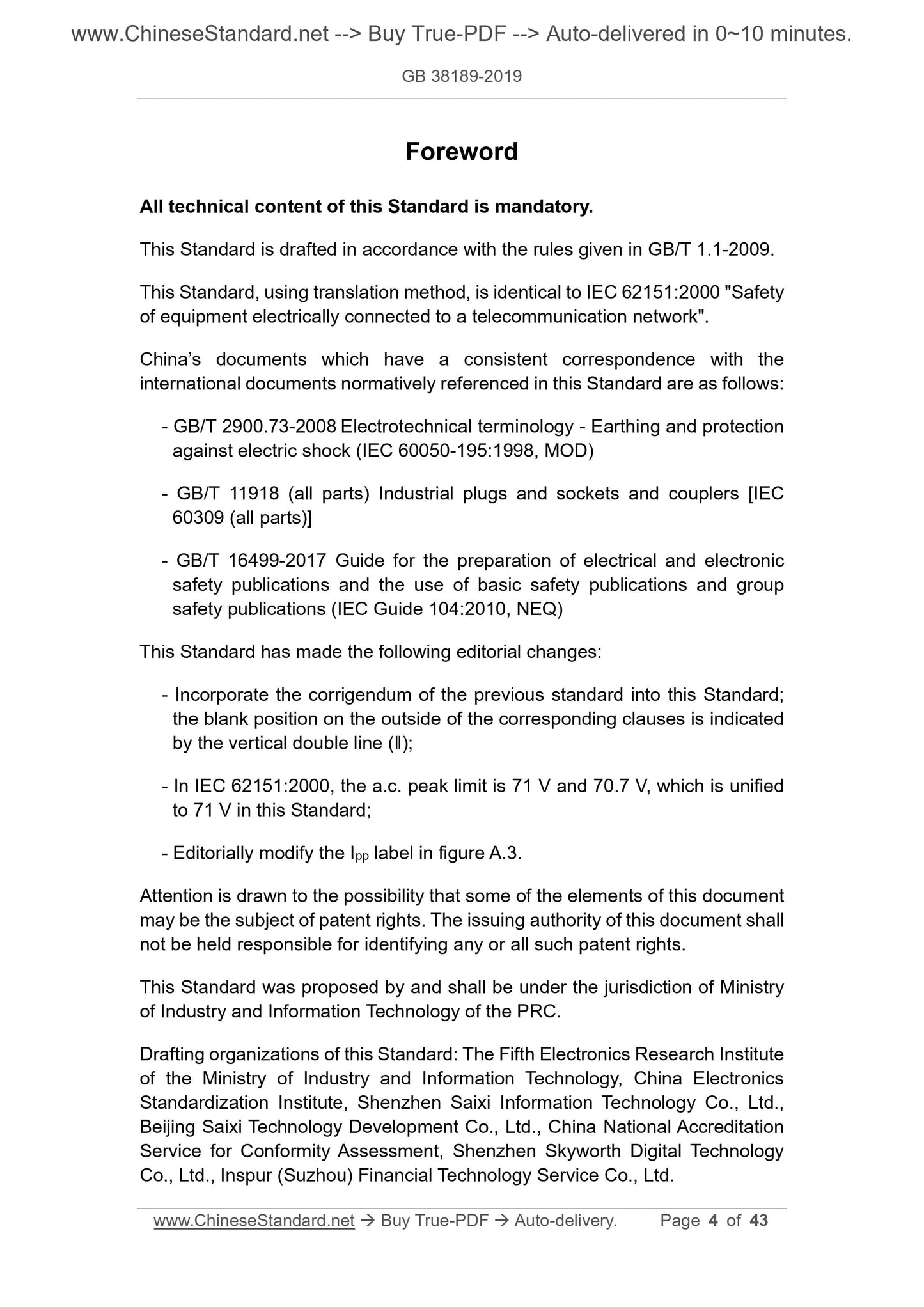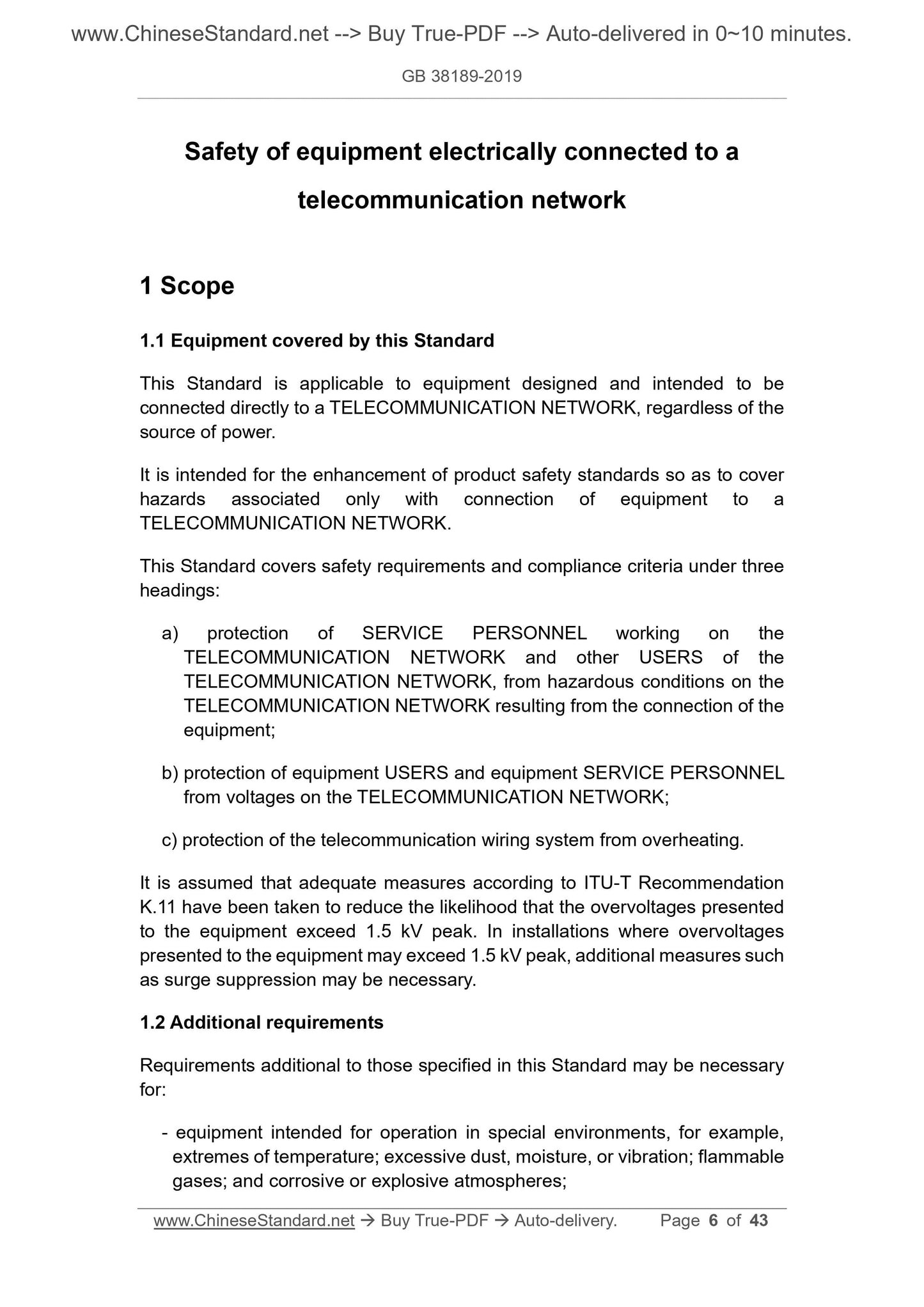1
/
of
5
www.ChineseStandard.us -- Field Test Asia Pte. Ltd.
GB 38189-2019 English PDF
GB 38189-2019 English PDF
Regular price
$370.00
Regular price
Sale price
$370.00
Unit price
/
per
Shipping calculated at checkout.
Couldn't load pickup availability
GB 38189-2019: Safety of equipment electrically connected to a telecommunication network
Delivery: 9 seconds. Download (and Email) true-PDF + Invoice.Get Quotation: Click GB 38189-2019 (Self-service in 1-minute)
Newer / historical versions: GB 38189-2019
Preview True-PDF
Scope
1.1 Applicable equipmentThis standard applies to equipment designed and scheduled to be directly connected to the communication network, regardless of the power supply.
This standard aims to strengthen product safety standards in order to cover all the dangers caused only by connecting to the communication network.
The safety requirements and compliance criteria contained in this standard have the following three aspects.
a) Maintenance personnel of the communication network and other users of the communication network suffer from the dangers caused by the connected equipment on the communication network
Risk protection;
b) Protection of equipment users and maintenance personnel from dangers caused by voltage on the communication network;
c) Protection against the danger of overheating the communication wiring system.
It is assumed that sufficient measures have been taken in accordance with ITU-T Recommendation K.11 to reduce the peak overvoltage of the equipment exceeding 1.5kV.
may. When the equipment is likely to have an overvoltage exceeding 1.5kV peak, additional protective measures may be required in the building facilities, such as
Surge suppression measures.
1.2 Additional requirements
For the following equipment, it may be necessary to add some requirements to those safety requirements specified in this standard.
---It is scheduled to be in special conditions such as extremely high or low temperature, excessive dust, high humidity or severe vibration, flammable gas, corrosion or explosive
Equipment working under environmental conditions;
---Medical electronic equipment directly connected to the patient's body.
1.3 Not applicable
This standard does not apply to.
---Protection of equipment users and equipment maintenance personnel from the dangers caused by the equipment itself. If the device itself meets the corresponding
According to safety standards, it is believed that equipment users and equipment maintenance personnel have been protected from the dangers caused by the equipment itself.
---Performance reliability of equipment and communication network.
---Use of communication network equipment exceeding the TNV circuit voltage limit.
1.4 Basic safety publications
The main purpose of this basic safety publication is to provide technical committees in accordance with the principles of IEC Guide104 and ISO /IEC Guide51.
It is used when drafting standards. This standard is not intended to be used by manufacturers and certification bodies.
One of the duties of the technical committee is to use basic safety publications during the drafting of publications, as long as applicable. Unless specifically mentioned or
Included in the relevant publications, otherwise the requirements, test methods and test conditions in this basic safety publication are not used.
If this standard is different from the relevant safety standards, the requirements of the relevant safety standards shall be adopted first.
Where this standard describes the use of basic insulation, other levels of insulation or protective grounding, the specific requirements of the relevant product safety standards
Be applicable.
Basic Data
| Standard ID | GB 38189-2019 (GB38189-2019) |
| Description (Translated English) | Safety of equipment electrically connected to a telecommunication network |
| Sector / Industry | National Standard |
| Classification of Chinese Standard | L09 |
| Classification of International Standard | 35.020 |
| Word Count Estimation | 30,346 |
| Date of Issue | 2019-10-14 |
| Date of Implementation | 2020-11-01 |
| Issuing agency(ies) | State Administration for Market Regulation, China National Standardization Administration |
Share
